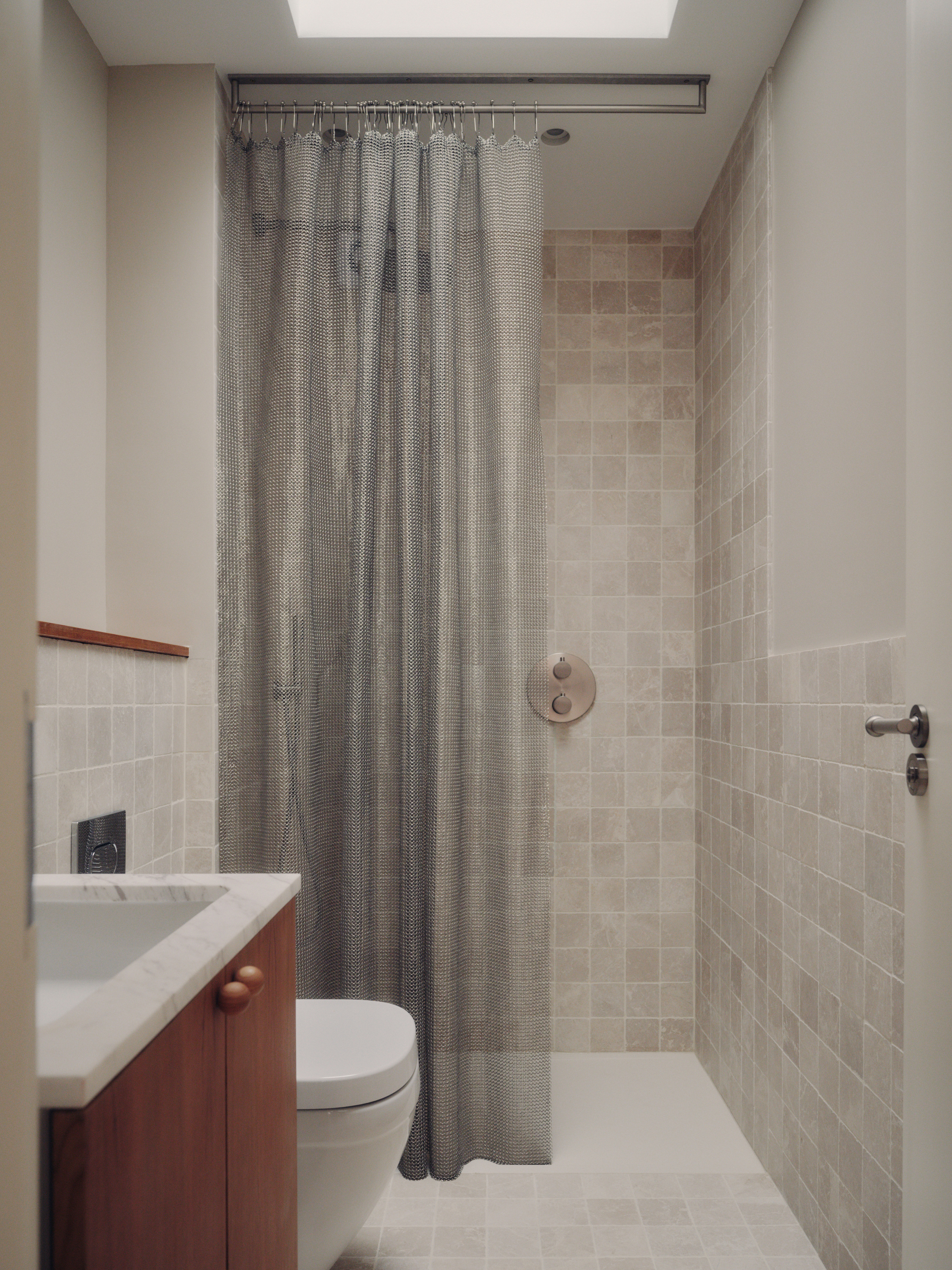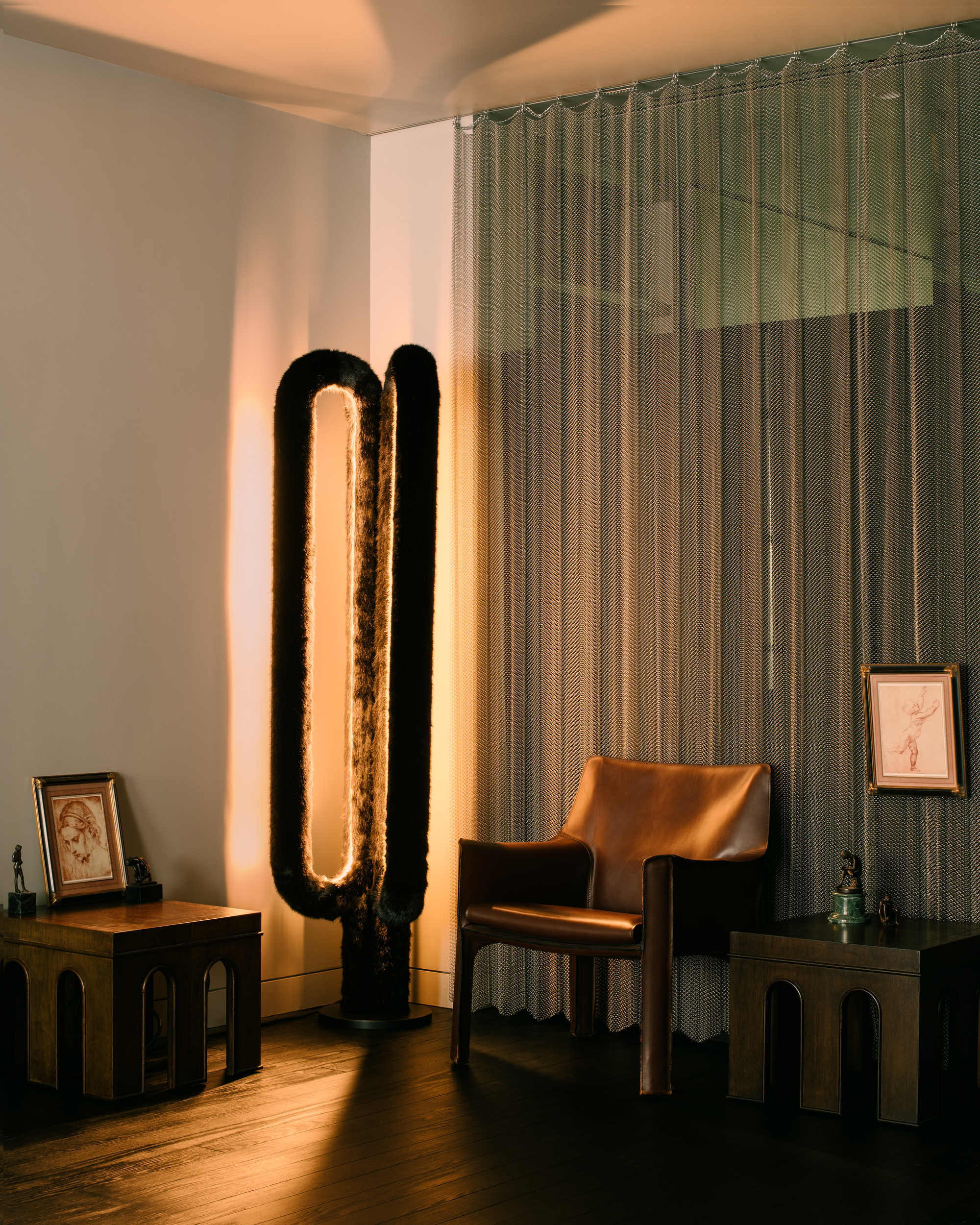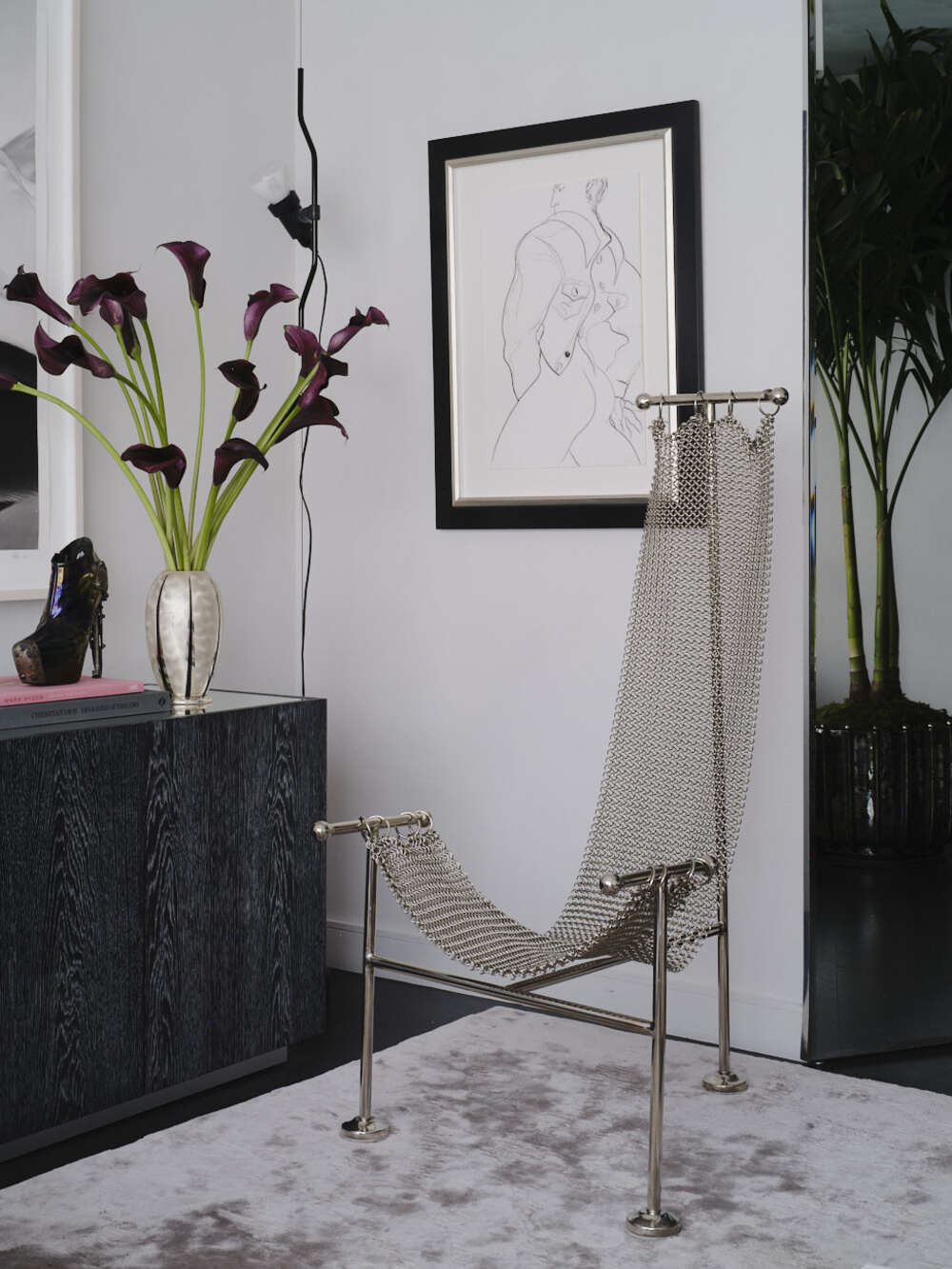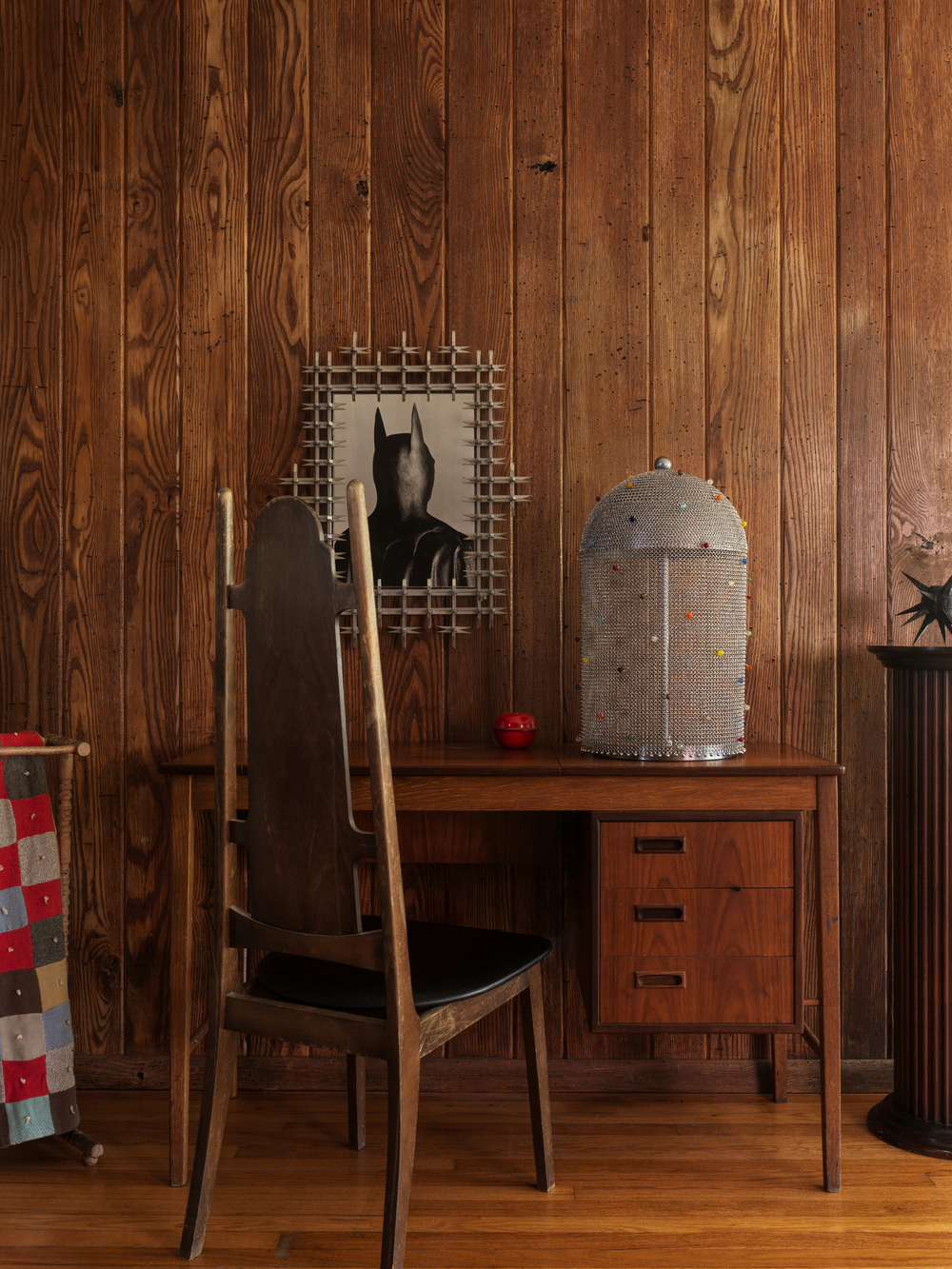
Honestly, I didn't expect chainmail to be on the cards for 2025, but when you sit down to think about why we've been seeing this medieval material appearing more and more in homes lately, it actually makes perfect sense. "It sits at the intersection of material innovation and historical reference," Erica Sellers, co-founder of Studio S II, tells me.
It's true — craftsmanship, character, heritage, and rich materiality have all been key interior design trends this year. We're taking references from historical periods and reimagining them in modern ways (or at least juxtaposing these details in our more contemporary spaces). And then, of course, there's the 70s and Y2K-inspired aesthetics that have been floating around for some time, too; safe to say, cool metallics are having their moment right now.
But how do you make chainmail details feel considered in a modern home? It's a fine line between chic and cliché (and only two letters differentiating the words). To find out, I asked designers who've managed to do exactly that, asking them why chainmail decor is suddenly everywhere, where to start, and how to layer it within your home —stylishly. Here's what they said.
Why Is Chainmail Decor Trending in Interiors Right Now?

"Recently we've seen a return to both industrialized spaces with the prevalence of stainless steel and also spaces that have more decoration and detail," explains Darren Jett, founder of New York-based interior direction studio, Jett. "Chainmail threads those two together."
It's part of a larger shift towards tactility and the use of more unusual textures in our interiors. There's a sculptural quality, yet still a sense of fluidity to chainmail that elevates it beyond more traditional fabrics.
Designer Ashley Law, founder of Flawk, sought to "elevate the mundane and often grim shower curtain into a sculptural element" in the bathroom of a residential home, and landed on chainmail as the solution.


And, of course, we can't ignore the medieval connotations and rise of the 'castlecore' design aesthetic. As we seek to instill a sense of storied romance into our homes, it feels only natural that we'd lean on the mythical allure of castles, princesses, and knights in shining armor.
But it's not just about its good looks, either. "Another exciting possibility with chainmail is its functionality," Erica Sellers, co-founder of Studio S II, tells me. "Paintings, mirrors, and accents can be hung directly from chainmail, making it possible to line entire walls with the material while displaying art upon it."
How to Style Chainmail In a Modern Home

When it comes to incorporating chainmail details in your home, the designers all agree that context is key, both in terms of how it's used and how it's layered within the room.
Perhaps the easiest entry point is through drapery or as a room divider idea. "When used in drapery and partitions, chainmail softens into a shimmering veil that catches light and moves like fabric," describes Erica. "Its fluidity offsets the harshness we typically associate with metal. It becomes dramatic and ethereal rather than harsh."
Darren agrees, adding that, "Chainmail drapery adds a warm but sensual drama to a space — how lighting passes through it, and dances across a room, is incredibly rich and sensual."

Then there are furnishings. Darren installed a chainmail chair by Panorammma into a previous project (see above); "Placed on top of a luscious silk carpet, the effect was divine," he says.
Wretched Flowers is a West Connecticut-based design studio that specializes in custom beaded chainmail lighting and tapestry pieces. Loney Abrams, one half of the husband-wife team, describes how the patterns of beads and gemstones they weave into each piece draw reference to historic American folk art, which creates a unique tension.
"We introduce a delicate, feminine charm to the otherwise brutal chainmail," she explains. "It's protective and strong, but also fluid and textile-like." A material once synonymous with strength becomes soft, almost jewelry-like, making it much easier to incorporate into a home environment. It's no wonder the studio's designs have proliferated on social media this year.


In terms of layering chainmail within a room's material palette, "Using it in a space with other reflective elements is critical," says Darren Jett. That's not just referring to glass and mirrored surfaces, either (although they work well), but lustrous fabrics, including velvet and silk, too.
"Velvet offers lush contrast, playing up softness against structure while still having elements of shimmer and an almost iridescent quality," says Erica, "while glass amplifies its reflective quality, creating moments of transparency and opacity, similar to chainmail."
"Its malleability makes it ripe for experimentation," adds Erica. "Expect to see chainmail woven into seating, layered into cabinetry fronts, or reinterpreted in tabletop objects. Ideally, it becomes less of a novelty and more of a design language."
Blending the industrial charm of chainmail with an elegant silhouette, this lamp is an easy way to embrace the aesthetic in your home.
Though not technically chainmail, I can't help but draw parallels between the look of this lattice placemat (which also comes as a Lattice table runner) and the medieval material.
Again, not a literal interpretation, but this mesh chair by Hay feels somewhat chainmail-adjacent and would be a nice entry point for the trend.
As for whether chainmail is a fleeting trend or something more timeless, "It's been used by nearly every culture starting from 400 BCE, so in that sense it's truly timeless," says Loney. "I think the key is to treat it as a layering element to add depth, dynamism, and drama, without leaning too literally into medieval references, which can feel like a cliché."
But perhaps it's less about chainmail itself, but what this trend means in a broader sense. "I think chainmail will evolve into other elements and materials that are perhaps deemed too 'out there' right now," says Darren. "It's been such a brave material, and it's thrilling to imagine the doors it can open up to other materials that have an industrial side with a hint of the decorative."
Rough stone, shattered glass... who knows what could be next.







